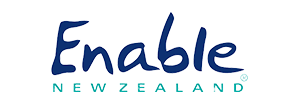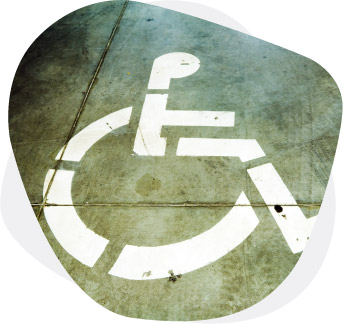Enable New Zealand
Accueil » Ressources » Études de cas » Enable New Zealand

Objectif Entreprise
Enable is a complex supply chain provider with lots of stakeholders and processes which produces a high degree of complexity and which Enable wanted to automate.
Benefices Entreprise
Enable through the delivery of the B2BE solution were able to increase visibility, save time and money, reduce errors and proactively manage their network.
Enable New Zealand increase visibility and save time and money through collaboration
Enable New Zealand is the biggest provider of equipment and housing modification services for the Health and Disability Sector in New Zealand. These services are contracted by the Ministry of Health, ACC and for some other District Health Boards.
In the last year Enable New Zealand: processed over 80,082 applications for a range of programmes; managed the return, refurbishment and reissue of around 26,565 pieces of Ministry of Health owned equipment; made 13,857 referrals to purchase 18,386 pieces of equipment for ACC; purchased 24,545 items of Ministry of Health List Equipment at a value of $4.8 million and managed 9,000 requests for disability information.
Le défi
Enable New Zealand is essentially in a complex supply chain situation with lots of stakeholders and lots of processes which produces lots of complexity.
Enable New Zealand is buying on behalf of both the end user and several government agencies involved in the process.
Enable New Zealand’s clients (who have a disability or injury) have to first have their requirements assessed by an independent assessor who decides if and what equipment the client needs.
When Enable New Zealand gets this assessment they then have to think about and deal with: the individual; the assessor; the government agency (which is paying for the equipment); the suppliers (who has it? at what price? how can they deliver it?) and if it is a housing modification then the council will need to approve it.

For each client Enable New Zealand also have to ask process questions like: does this person meet eligibility; is the assessor registered; is the builder registered; is the equipment fit for purpose; what reports do the various stakeholders need / want from both Enable New Zealand and from everyone else.
Once the equipment or housing modification is in place, then Enable New Zealand needs to track it for the whole of its life. They need to know: where is it; what state is it in; what repairs are needed and what repairs had been done before. They also need to share some of this information with the repairer.
Enable New Zealand GM Heather Browning says “We are running a sophisticated supply chain operation with many stake holders working for different organisations, such as: clients; assessors; ACC; DHB; our own staff; repairers and transporters of the equipment. We are providing essential equipment which requires an inherently sophisticated procurement and logistics process. Also there are many sub processes (both ours and those of our supply chain partners) that all participants need to implement on any one injury or disability claim”.
Heather adds “The issues Enable New Zealand face are similar to other complex supply chains – that we can’t see what the other organisations are doing in the process and it is therefore difficult to collaborate with our supply chain partners. And we and our partners need to collaborate to be efficient in the procurement, delivery and maintenance of the products and services we provide”.
Enable New Zealand decided they needed an efficient online procurement capability that would manage the process based on the rules and with the workflow that Enable New Zealand needed to satisfy all the stakeholders. Most importantly they needed all their supply chain partners to have visibility of the procurement process.
As Heather says “While these are caring services – they are best provided if Enable New Zealand treats them as hard procurement practices and gets the best prices, the best service and hits or beats industry standards”.


La solution
Enable New Zealand turned to B2BE and their Round Trip Logistics (RTL) product.
RTL is a user configurable Supply Chain product suite engineered as an online collaborative software platform (SaaS) which allows all participants in a supply chain to seamlessly collaborate via document interchange or user interface and provides participants with end-to-end supply chain visibility with a 360 degree view of the supply chain.
RTL is made up of a series of product modules. The RTL Requisitions Module can be used to process requests for services or products such as those organised by Enable New Zealand.
RTL Product Manager, Fred Bosman, says “we have configured an instance of RTL for Enable New Zealand so that it reflects their decisions, processes and workflow.”
The RTL Requisitions module provides online configurable visibility of the requisition status throughout the transaction life cycle. This means that Enable New Zealand’s supply chain partners can all have an (appropriately restricted) view of the Enable New Zealand supply chain events in which they are involved.
RTL Requisitions thus specifically address Enable New Zealand’s requirements by allowing Enable New Zealand to commence transacting ACC requisitions for equipment online.
The Requisitions Module leverages off the Business Process Engine used in the RTL platform which is highly configurable and can:
- Optionally include single point or multi-level request authorisation processes at the earliest possible opportunity in the process to exclude any inappropriate requisitioning,
- Re-route rejected requisitions for revision to the requestor or outright reject the requisition, and
- Allow for items to be requisitioned on a trial, loan or even consignment basis.
The RTL Requisitions Module was designed with flexibility in mind and was easily able to be configured to include both: requisitions by Enable New Zealand’s own organisation or group and requisitions for items or services by or from non-active supply chain participants such as on behalf of frontline customers or other entities like ACC or a DHB.
Following discussions with Enable New Zealand and many other industry stakeholders, industry specific information was collected in the RTL wizard based architecture which assists users in decision making and in driving other down-stream processes that require information collected during the requisition phase.
For example, Enable New Zealand’s RTL has a rule that for goods requisitioned that are over a certain value then providing a PO number is a mandatory field but it is not necessary if the goods are below that value. With RTL, this means the field will appear and be mandatory if the value is above this level but it will be greyed out (as unnecessary) if it is below this value.
As part of the Requisitions Module, the RTL Shipments Module was configured to address the needs of Enable New Zealand to specify the delivery of items to one or many delivery destinations. This module tightly integrates with the RTL address book to enable selection of known delivery locations while allowing the flexibility needed by Enable New Zealand’s supply chain partners to use single use addressing.
As with all RTL Modules, the Requisitions Module was tailored to Enable New Zealand’s needs to structure the review of transactions by its supply chain staff to help identify and filter inappropriate requisitions that might result in costly procurement before transactions are progressed to the next phase.
For example, items can be ordered as urgent if they are needed urgently by the client. However, on a paper form it was all too easy to tick the “urgent delivery” box and not think about the extra cost incurred. The RTL system has a rule that if the “urgent delivery” box is ticked then a warning note, explaining the increased charges, will appear on screen and the user needs to accept these – thus reducing inappropriate spending.
The Enable New Zealand RTL solution is set up to allow for 3 different requisition scenarios. These are:
- Standard list – for low cost standard items, users select from a set catalogue.
- Complex list – Where the item is either of high value or is built up from a number of components, still selected from a set catalogue.
- Non list – where the requested item is not available in the catalogue but the Case Manager still wishes to request the item for purposes of trialling with their client. In this instance, RTL will advise Enable New Zealand’s back-end system (JDE) of a need to purchase the item, and Enable New Zealand’s procurement process will be initiated.


Le résultat
Having only recently been made live for Enable New Zealand and its supply chain partners, it is too early for specific metrics. However, even from the current limited use, Enable New Zealand is already confident RTL will do a number of things for them:
Collaboration by visibility
Giving all supply chain participants full visibility of each item’s progress in the supply chain, thus allowing Enable New Zealand and its supply chain partners to collaborate on every request for goods or services.
Saving time and money
For example, just having all participants see where a request for goods or services is at during the process, can speed up the process dramatically and this can save time and money.
Reducing errors
By having rules and workflow that enforce certain practices, errors are greatly reduced. For example a form cannot be sent to the next supply chain participant without a key variable (such as the address of the claimant) filled in or it being filled in with an impossible variable. This instant gatekeeping reduces a lot of the back and forth that previously bedevilled the process.
Also, in some instances, by giving users predefined options, errors and mistakes are reduced. For example, users selecting products from a drop down list is not only faster but also more accurate than users filling in a free text field with a complex product code.
Introducing alerts
Previously, identifying something that was incomplete or required action in real time was difficult and a retrospective process. Now alerts tell all supply chain participants that certain actions are due or overdue. Group alerts and escalation alerts eliminate old problems like: “required information not received” or “authorisation not obtained”.
Heather is delighted with the first results. “The stakeholder groups’ responses to seeing the Enable New Zealand instance of RTL in operation have been really enthusiastic. We and our partners can see how it will allow us to collaborate across organisations; it will cut down on waste and allow us to better serve our clients.”
Where to from here
The next phase will be to extend the Case Management system. An example of this would be if a house was being modified then all players, (for example the trades people working on the house) will be able to see the status of the work and have clear visibility of the work of others – i.e. as other trades finish their work, participants will be appropriately alerted as to when their piece of work is due to start / complete and get regular real time updates on this.
Another area of growth is in the ordering goods from suppliers (as opposed to requesting them). Heather says “Eventually we want to bring equipment catalogues online and thus do better ordering. We see this system as incrementally growing and having the capacity to be used for all equipment and systems management”.
An example Browning gives of this is breaking down the barriers between short term and long term loans of equipment. Heather says “Enable New Zealand and our supply chain partners could have and then transfer, virtual ownership of equipment from one party to another. Currently we sometimes have items in one place and then take it away and then take it back on behalf of another entity (e.g. a DHB or ACC). Instead, if we could just change the ownership of the item, it would save all the transport costs”.
“We see RTL as a platform that allows us to respond more effectively to the DHB and disability sector, with supply chain improvements of equipment, both short term and long term loans of equipment, and other services which will give the whole sector a cost benefit” says Heather.